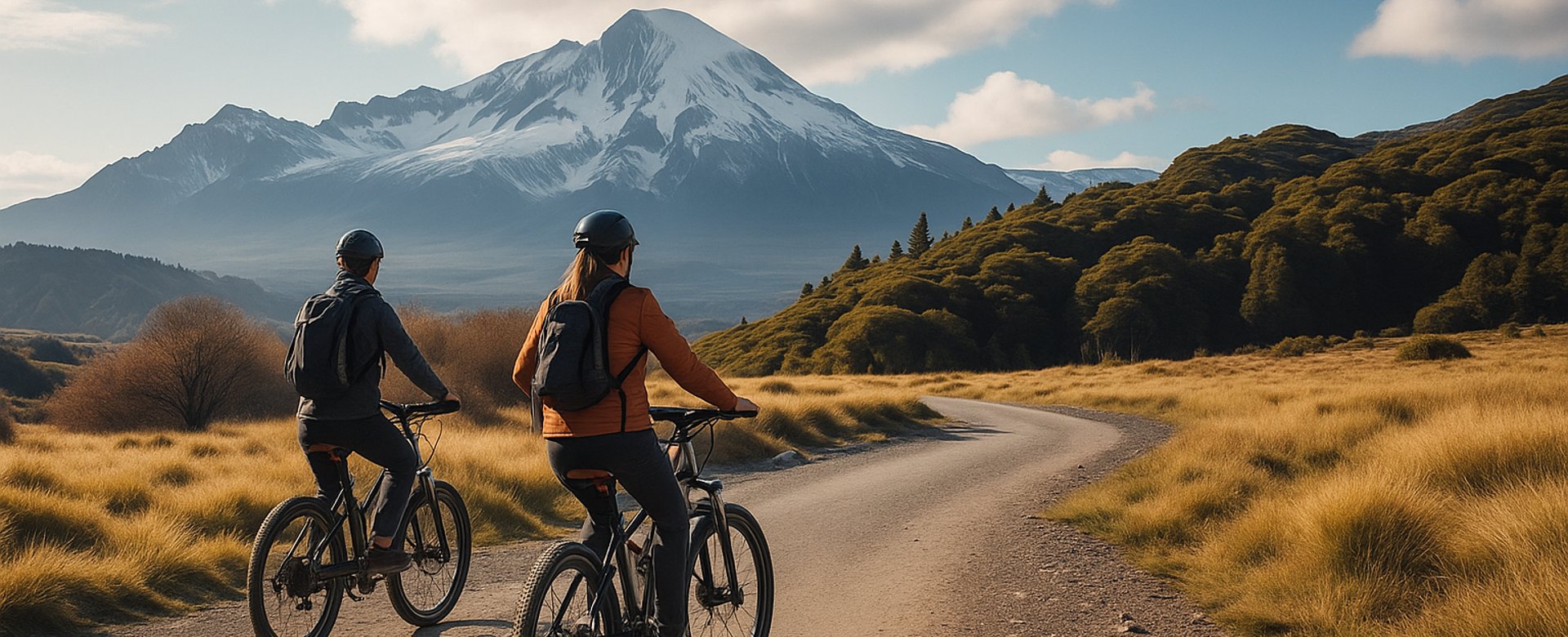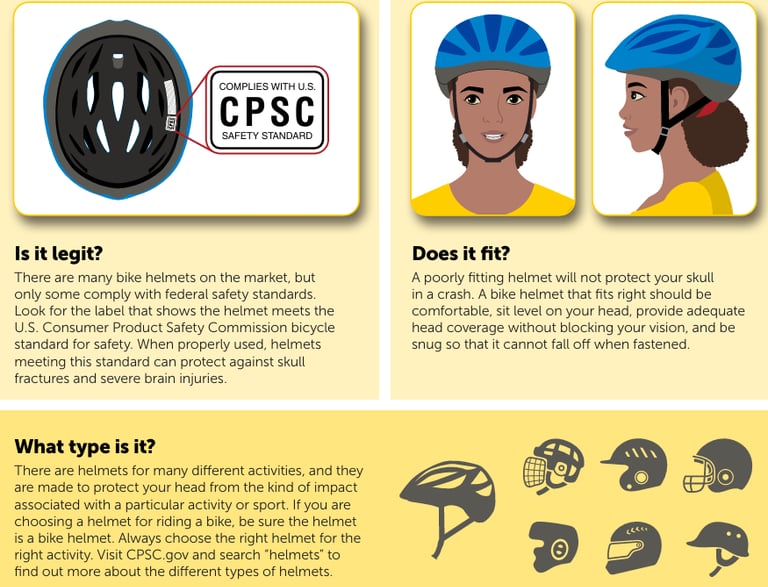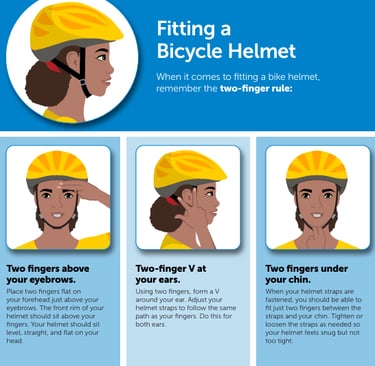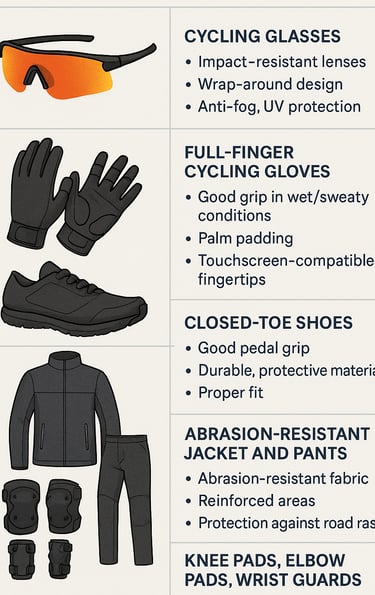
Wear Protective Gear
Hope for the best, but anticipate for the worst
All riders must wear a helmet
Many bicycle‐related head injuries occur when riders do not wear helmets or wear them improperly. The act of wearing a properly certified, well‐fitting helmet is one of the most effective safety measures for cyclists.
First, let's choose a helmet
Is it legit? Confirm the helmet meets the U.S. federal safety standard (label should say it meets the U.S. Consumer Product Safety Commission bicycle helmet standard)
Is it the right type? if you are riding a bike, use a helmet designed for bicycling (not one for another sport).
Does it fit?
Sit level on the head.
Cover the head adequately without blocking vision.
Be snug so it cannot fall off when fastened.
Helmet Fit
The helmet should sit level on the head, not tilted back or forward.
It should drop low on the forehead so that only one or two finger-widths space remain between the helmet’s front and the eyebrows.
The side straps should form a “V” shape just below each ear.
The chin strap should be buckle-fastened, and tight enough that you can only fit about one or two fingers between strap and chin.
After fastening, try moving the helmet—front to back, side to side. It should stay snug and not shift easily.
If the helmet moves a lot when you shake your head or you can pull it off easily, the fit is too loose.
If the helmet causes discomfort, pain points, or you’re tempted to tilt it forward/back to feel better, the sizing or adjustment likely needs change.
Always choose a helmet that’s certified for bicycling use and replace it after any significant impact or if you notice obvious damage.
Additional protective gear
your ebike goes faster and further and a regular bike. That means you should be wearing additional protection. Here is a non-exhaustive list of additional gear to consider:
Cycling glasses: Impact-resistant lenses, wrap-around design for full protection from wind/debris, anti-fog, UV protection.
Full-finger cycling gloves: Good grip in wet/sweaty conditions, palm padding for shock absorption, wrist closure, touchscreen-compatible fingertips.
Closed-toe shoes with good pedal grip: Avoid floppy/loose shoes that can catch in pedals; shoes should allow good control and protect feet from impacts or chain injuries
Abrasion-resistant jackets and pants (reinforced or with protective fibers) to prevent road-rash in a fall.
Knee pads, elbow pads, wrist guards , especially for trail riding, higher-speed commutes, or if new to e-bikes.
Protect your body on every ride








